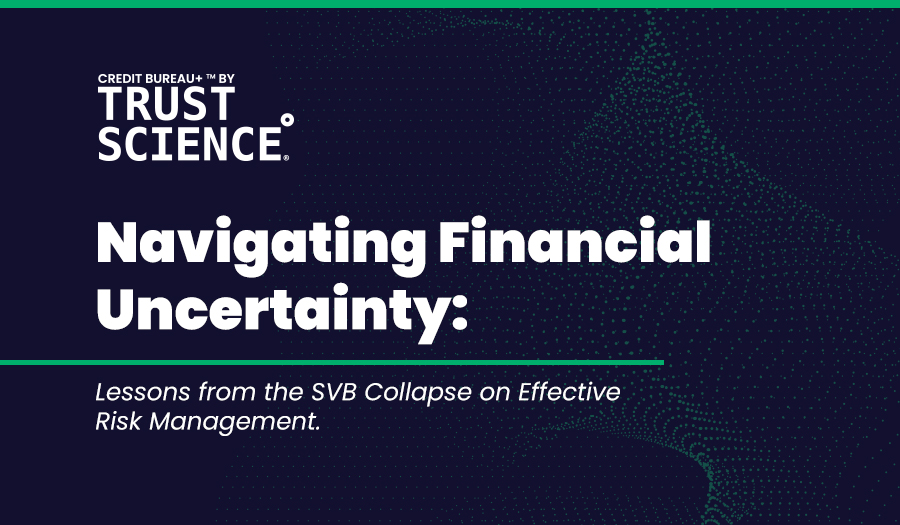The recent collapse of Silicon Valley Bank (SVB) has brought the importance of risk management to the forefront of the financial industry. As one of the largest lenders in the start-up ecosystem, SVB’s collapse highlights the importance of dynamic and robust risk management strategies in maintaining financial stability and, thus, the avoidance of similar disasters in the future.
Risk management plays a crucial role in the financial sector. It requires the recognition, evaluation, and ranking of risks, followed by the development and execution of strategies to control or mitigate identified risks. Efficient risk management empowers financial institutions to reduce losses and preserve financial stability in cyclical and uncertain economies. By comprehending the risks they encounter, such as credit, market, operational, and reputational risks, financial institutions can establish versatile and adaptive risk management strategies that accommodate changes in the macroeconomic environment.
The collapse of SVB on March 10 sent shockwaves through the financial world. In an attempt to raise $2.25 billion in capital and stabilize its balance sheet after a large recognition of losses, the bank inadvertently caused panic among investors, leading to a wave of customer withdrawals and a plummet in its stock. This panic also contributed to the failure of Signature Bank, which was seized by regulators on March 12. To prevent the spread of banking contagion and maintain financial stability, the Federal Deposit Insurance Corporation invoked a “systemic risk exception” to reimburse uninsured depositors. Investigations by the Justice Department and the Securities and Exchange Commission are ongoing to further determine the causes of SVB’s collapse.
The SVB case underscores the importance of understanding and managing risk in a dynamic manner. The bank had taken on excessive fiscal exposures without proper management, and when losses occurred, they could not be absorbed, leading to insolvency.
To effectively manage risks, financial institutions should implement a comprehensive risk management plan. This plan should encompass the following key elements:
- Risk Identification: Recognize and evaluate various types of risks faced by the institution, such as credit, market, operational, and reputational risks. This process should involve a thorough analysis of internal and external factors that could impact the institution’s financial stability and operations.
- Risk Measurement: Develop methods to measure identified risks, using statistical and financial analysis. Utilize advanced tools and techniques, such as stress testing, scenario analysis, and value-at-risk (VaR) models, to quantify the potential impact of various risks on the institution’s financial position.
- Risk Mitigation: Devise strategies to manage or mitigate identified risks, incorporating diversification of assets, hedging, insurance, and other risk-transfer mechanisms. Additionally, implement strict lending policies, establish exposure limits, and maintain robust internal controls to minimize risk exposure and ensure compliance with regulatory requirements.
- Risk Monitoring: Continuously monitor and assess the effectiveness of the risk management plan, making adjustments as needed. Implement real-time risk monitoring systems, and establish clear reporting lines and communication channels to ensure timely identification and escalation of emerging risks.
- Risk Culture: Cultivate a risk management culture within the institution, ensuring that all employees are aware of the risks and their role in managing them. Promote a transparent and open environment that encourages employees to report potential risks or concerns without fear of retaliation. Provide ongoing training and development programs to enhance employees’ risk management skills and knowledge.
- Regulatory Compliance: Stay up-to-date with relevant regulations and industry best practices, and ensure the institution’s risk management plan complies with all applicable rules and guidelines. Regularly review and update the risk management plan to reflect changes in the regulatory landscape.
- Third-Party Risk Management: Assess and manage risks associated with third-party relationships, such as vendors, service providers, and partners. Implement due diligence processes, ongoing monitoring, and contract management to mitigate potential risks from third-party engagements, including credit risk.
By implementing a comprehensive risk management plan that addresses these key elements, financial institutions can effectively manage risks, maintain financial stability, and ensure a safe and secure financial environment for their clients.
The SVB Bank collapse serves as a stark reminder of the importance of risk management in the financial industry. Financial institutions must recognize the various types of risks they face, devise strategies to manage or mitigate them, and foster a culture of risk management. By doing so, institutions can better prevent losses, maintain financial stability, and ensure a safe and secure financial environment for their customers. The lessons learned from the SVB collapse can help guide financial institutions in refining their risk management practices and safeguarding against future crises.








